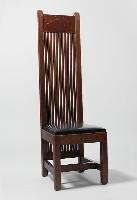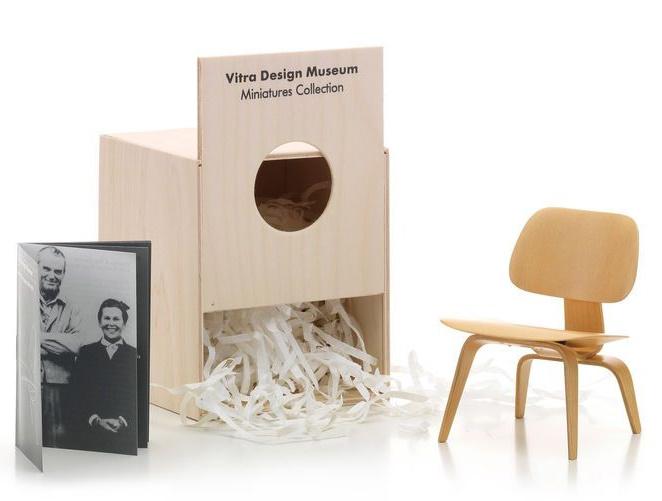
The side chair by Frank Lloyd Wright, 1901
|

The LCW (Lounge Chair Wood) by Charles and Roy Eames, 1945
In 1940, Charles Eames and Eero Saarinen developed a chair with a novel plywood seat
molded into a three-dimensional form for a competition sponsored by the New York Museum
of Modern Art. However, it was not possible to produce the chair commercially, due to
inadequate technical methods. It was seldom possible to press the plywood into a three-dimensional
form without it breaking or splitting. During the following years, Charles and Ray Eames
concentrated their efforts on developing a new method.
The plywood chairs DCW (Dining Chair Wood) and LCW (Lounge Chair Wood) are the result of
this long-term experimentation. In 1945, Charles and Ray Eames returned to the idea of a
seating shell made out of molded plywood; however the results were unsatisfying. They
dispensed with the multifunctional shell and divided the seat and back into separate,
freely articulated elements connected by a spine (frame). Each element has a clearly defined
function, which it fulfills optimally with a minimum amount of material. "Shock mounts" - rubber
disks bonded onto the wooden surface - connect the seat and back with the frame, which exists
in wood or metal and in two different heights, either as a dining chair or lounge chair.
tagged with: art design furniture
|

The Y Chair, Hans J. Wegner, 1960
|